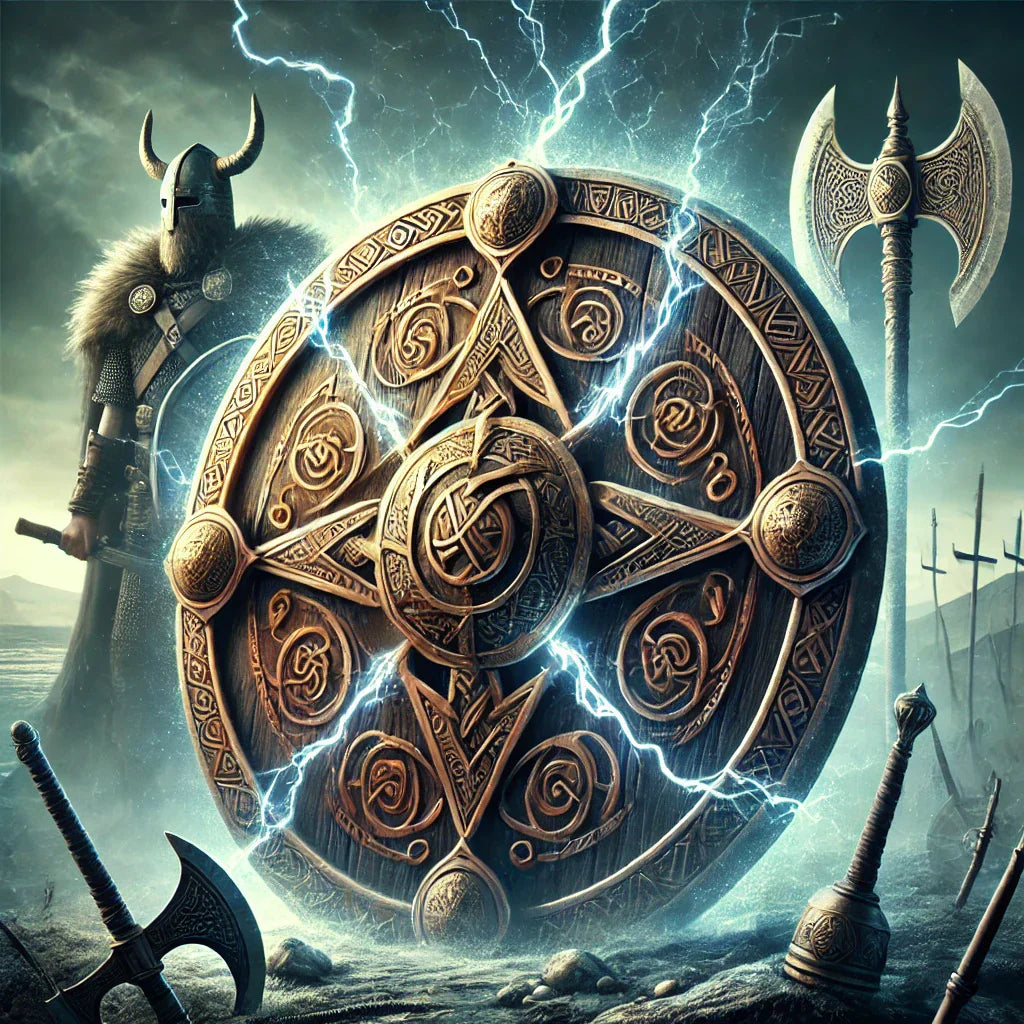The Meaning of the Helm of Awe: More Than Just a Viking Symbol

The Meaning of the Helm of Awe: More Than Just a Viking Symbol
The Helm of Awe, or Ægishjálmur in Old Norse, is one of the most powerful symbols in Viking history. It wasn’t just a decoration or a random design—it was a sacred emblem believed to provide strength, protection, and fearlessness. Vikings saw this symbol as a way to shield themselves from harm, both in battle and in daily life. To them, symbols weren’t just art; they carried deep spiritual significance, with the power to influence fate and reality itself. But what does the Helm of Awe really mean? Was it just a superstition, or did it have a deeper connection to Norse beliefs and warrior culture? This symbol, often carved into shields, armor, and even skin, was thought to create an invisible force field around the wearer, repelling enemies and filling them with unshakable confidence. Even in the most chaotic and brutal Viking battles, warriors who bore the Helm of Awe believed they had the protection of divine forces, making them nearly invincible. The idea that a simple symbol could provide such immense power shows how deeply the Vikings trusted in the magic of their gods, their traditions, and their own spiritual strength. To understand why this symbol was so revered, we need to explore its origins, its connection to Viking runes, and why it continues to inspire people today.
The Origins of the Helm of Awe
The Helm of Awe dates back to early Norse mythology and Viking traditions, appearing in ancient sagas and magical texts. Unlike Mjölnir, Thor’s hammer, which was a physical weapon, the Helm of Awe was more of a spiritual force. It wasn’t a physical helmet but a symbol meant to invoke power and protection. The name itself gives us a clue about its purpose—"Ægir" means awe or terror, and "hjálmur" means helm or helmet. Together, the words describe something that instills fear in enemies while also offering defense to the wearer. The concept of an invisible, magical shield was common in Norse mythology, where warriors and gods alike used mystical protection to gain an advantage in battle. The Helm of Awe was not something that could be forged in fire like a sword or an axe; instead, it was a force that surrounded its bearer, guarding them against harm and giving them unmatched courage.
Vikings believed that by drawing the Helm of Awe on their foreheads, shields, or weapons, they could harness its magical power. It was thought to give warriors an unbreakable will, making them fearless in battle. The design of the symbol features eight arms radiating outward from a center point, resembling a protective barrier. Some believed that the arms of the symbol represented magical energy extending outward, forming a shield around the person who carried it. This protective power was especially important for Viking warriors, who often faced overwhelming odds in battle. To them, having a psychological edge over their enemies was just as crucial as having a strong sword or shield. The belief that they were divinely protected by the Helm of Awe gave them the confidence to fight without hesitation, knowing that fate was on their side. This deep belief in symbols is something that can also be seen in other Norse traditions, such as the sacred Tree of Life, which represented wisdom, balance, and the connection between all things.
Runes and the Power of Protection
Like many Norse symbols, the Helm of Awe is deeply connected to runic magic. Runes were not just letters in the Viking world; they were believed to hold real power, capable of shaping reality and influencing the world around them. The Vikings often carved runes into weapons, jewelry, and even their own bodies to enhance their strength, luck, and protection. The Helm of Awe was thought to be created through these runic forces, making it a direct channel of mystical energy. Its design was not chosen randomly—each arm of the symbol was believed to act as an extension of its magical protection, repelling attacks and shielding the bearer from harm. Warriors who inscribed this symbol onto their armor believed that they would become untouchable, their enemies' weapons glancing off as if they had struck an invisible wall. Some even believed that the Helm of Awe could confuse or weaken their enemies, making them hesitant and fearful before the battle even began.
Runes and symbols like the Helm of Awe were often carved onto shields, weapons, and amulets, ensuring their magic was carried into every battle. It was thought that by drawing the Helm of Awe on their skin or armor, Vikings could invoke the power of Odin himself, gaining his wisdom, foresight, and ability to manipulate fate. This practice of carrying powerful symbols is reflected in Norse jewelry, where Vikings wore rings, pendants, and amulets engraved with sacred runes for protection and strength. The belief in magical protection was not just limited to battle, either. Many Vikings would carve runes and symbols onto their homes, their boats, and even their livestock, believing that they could keep evil forces at bay. This deep-rooted trust in symbolism is what makes Norse culture so fascinating today. If you want to explore more about Viking symbols in jewelry, check out our article on Top 5 Viking Rings and Their Norse Symbols.
The Helm of Awe in Viking Culture
The Helm of Awe was more than just a battle symbol; it was a way of life. The Vikings believed that true power came from within, and the Helm of Awe served as a reminder that their strength was not just physical but also spiritual. This belief extended beyond the battlefield—Vikings used the symbol in rituals, ceremonies, and everyday life to ensure they were always under divine protection. Many Norse warriors were known to tattoo the Helm of Awe onto their bodies, particularly on their foreheads, believing it would strike fear into their enemies while giving them unshakable confidence. It was a symbol of both intimidation and reassurance, showing that the bearer was untouchable and under the guidance of powerful forces. This connection to divine power made the Helm of Awe one of the most respected and widely used Viking symbols.
Carry the Strength of the Helm of Awe
The Viking Age may have ended, but the power of the Helm of Awe continues to inspire those who seek strength, resilience, and fearlessness. Whether you wear it as a piece of jewelry, a tattoo, or simply keep it as a personal emblem, the symbol serves as a reminder that true power comes from within. The Vikings believed that by embracing their fears and facing their challenges head-on, they could achieve greatness and honor. Today, many people continue to wear this symbol as a way to remind themselves to stay strong, fearless, and protected against the challenges of life. If you want to carry the power of this legendary symbol, explore our Helm of Awe Viking Jewelry Collection. Each piece is crafted to capture the essence of Norse strength and protection, allowing you to carry the wisdom of the Vikings wherever you go.
Conclusion
The Helm of Awe is more than just an ancient Viking symbol—it is a representation of courage, protection, and the fearless warrior spirit. From its origins in runic magic to its use by Viking warriors, this powerful emblem has stood the test of time. Whether you see it as a symbol of divine protection, inner strength, or Norse heritage, the Helm of Awe continues to inspire and empower those who wear it.




